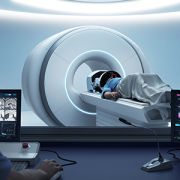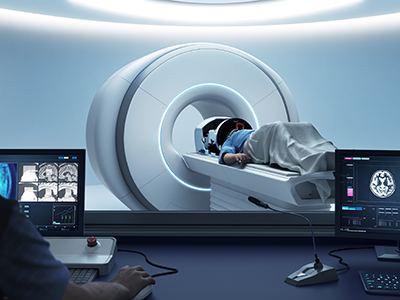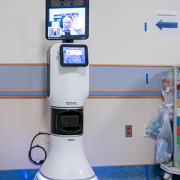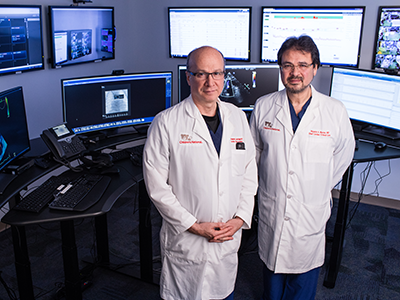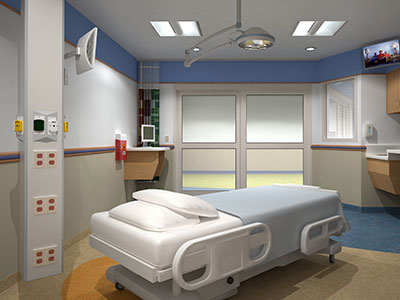
To help clinicians provide better care to families after children die, Tessie W. October, M.D., MPH, and colleagues recently published an article on this topic in a special supplement to Pediatric Critical Care Medicine on death and dying.
Death and dying are always difficult topics to discuss at hospitals. They’re especially hard conversations when they occur within pediatric intensive care units (PICUs), says Tessie W. October, M.D., MPH, a critical care specialist at Children’s National.
“It’s almost easier to pretend that children don’t die in the ICU. But they do,” Dr. October says.
Tragically, some children do die in ICUs. However, even when pediatric patients die, Dr. October adds, the pediatric care team’s relationship with the bereaved family continues. Knowing how to help vulnerable families during these trying times and ensuring they have needed resources can be critical to lessening the health and social consequences of grief. To help clinicians provide better care to families after children die, Dr. October and colleagues recently published an article on this topic in a special supplement to Pediatric Critical Care Medicine on death and dying.
The multi-institutional research team performed a narrative literature review for this budding field. They pored through more than 75 papers to better understand the health outcomes of parents whose child died within a PICU and the different ways that hospitals help families cope with these tragedies.
The researchers found a range of detrimental health outcomes, from a significantly increased risk of parental death in the aftermath of a child’s death to higher rates of myocardial infarction, cancer and multiple sclerosis. Bereaved parents used more health care resources themselves, took more sick days and had more sleep problems than parents who weren’t bereaved.
Likewise, parents whose child died were at a high risk of experiencing mental health conditions including complicated grief, anxiety, depression and posttraumatic stress disorder. Divorce was eight times higher among bereaved parents compared with the general population, and financial crises were common after voluntary or involuntary unemployment.
Knowing which risks parents could face can help the care team respond better if a child dies, Dr. October explains. Their review highlighted simple ways to support families in the immediate aftermath of a child’s death and beyond, such as:
- Giving parents the opportunity to spend time alone with the child’s body
- Allowing friends, family and others to visit at the parents’ discretion and
- Providing easy access to professional support, such as chaplains, social workers and grief coordinators.
Even simple acts such as closing doors and blinds to provide privacy can be helpful, Dr. October says.
An ongoing relationship with health care providers is also important for helping parents grieve, she adds. Children’s National is among hospitals across the country to set up meetings for parents and other family members within weeks of a child’s death. This gives parents a chance to ask questions about what happened in the confusing blur of the PICU and to gather resources for themselves and surviving siblings. Children’s National also provides ongoing support through periodic calls, sending sympathy cards, attending funeral services and in a special annual memorial during which surviving family members release butterflies.
“Our role doesn’t end when a child dies,” Dr. October says. “To help parents through bereavement, we need to maintain that strong connection.”
Another way to help bereaved families is to make sure they have adequate information, she adds, particularly about the confusing subject of brain death. In a different study recently published in Chest Journal, Dr. October and Children’s colleagues sought to understand which information the public typically accesses about this topic.
The team searched Google and YouTube using “brain dead” and “brain death” as search terms. They evaluated the top 10 results on both sites, assessing the accuracy of information using 2010 guidelines released by the American Academy of Neurology. They also assessed the reading level of websites and evaluated comments about the YouTube videos for content accuracy and tone.
They found that there was inaccurate information on four of the 10 websites, six of the 10 videos and within 80 percent of the YouTube comments. Most of these inaccuracies dealt with using terms like brain death, coma and persistent vegetative state interchangeably. “These conditions are very different and affect how we treat patients,” Dr. October says.
The average reading level of the websites was 12th grade, far too sophisticated for much of the public to comprehend, she adds. And the majority of comments on the YouTube videos were negative, often disparaging clinicians and deriding organ donation.
“It’s really important for providers to recognize that this is an emotionally laden topic, and a lot of times, families come to us with information that’s not always true,” she says. “That’s why it’s especially important for the field to respond with empathy and care.”
In addition to Dr. October, co-authors of the Pediatric Critical Care Medicine study include Karen Dryden-Palmer, R.N., MSN, Ph.D., The Hospital for Sick Children; Beverley Copnell, Ph.D., BAppSc, R.N., Monash University; and Senior Author Kathleen L. Meert, M.D., FCCM, Children’s Hospital of Michigan. Dr. October’s co-authors for the Chest Journal article include Lead Author, Amy H. Jones, M.D., and co-author Zoelle B. Dizon, BA, both of Children’s National.
 In 1984, Children’s National Hospital became the first children’s hospital to offer Extracorporeal Membrane Oxygenation (ECMO) and remains one of the largest ECMO programs in the nation, led by Billie Lou Short, M.D., chief of the Division of Neonatology at Children’s National. This year, the Children’s National ECMO Program was recognized by the Extracorporeal Life Support Organization (ELSO) with the Platinum ELSO Award of Excellence in Extracorporeal Life Support. This award recognizes centers that demonstrate an exceptional commitment to evidence-based processes and quality measures, staff training and continuing education, patient satisfaction and ongoing clinical care.
In 1984, Children’s National Hospital became the first children’s hospital to offer Extracorporeal Membrane Oxygenation (ECMO) and remains one of the largest ECMO programs in the nation, led by Billie Lou Short, M.D., chief of the Division of Neonatology at Children’s National. This year, the Children’s National ECMO Program was recognized by the Extracorporeal Life Support Organization (ELSO) with the Platinum ELSO Award of Excellence in Extracorporeal Life Support. This award recognizes centers that demonstrate an exceptional commitment to evidence-based processes and quality measures, staff training and continuing education, patient satisfaction and ongoing clinical care.


